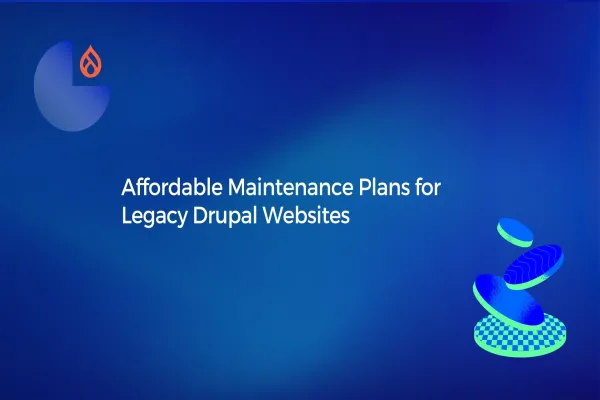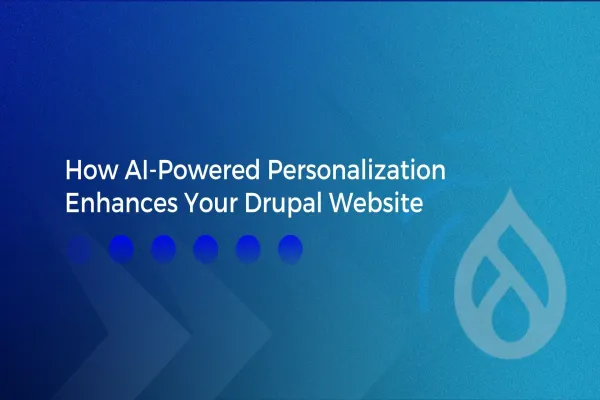Your Path to Drupal 9 and Beyond: What's in the Hood?
The digital landscape is undergoing a seismic shift, and organizations face increasing pressure to adapt. For enterprises reliant on Drupal, the transition from Drupal 9 to Drupal 10 represents a crucial juncture. With Drupal 9’s end-of-life in November 2023, it’s now time to act decisively. Beyond the immediate migration, the path forward demands foresight, meticulous planning, and a commitment to scalability, security, and innovation. This guide explores the key considerations for enterprises navigating this critical transition.
Why Now Is the Time to Act
Drupal 9’s end-of-life isn’t just a technical deadline; it’s a strategic milestone. Delaying migration risks exposing your organization to security vulnerabilities, compliance issues, and compatibility challenges. For enterprises managing multi-brand or multi-location operations, the stakes are even higher. Ensuring a seamless transition to Drupal 10 and beyond is not merely about software updates; it’s about future-proofing your digital infrastructure.
Organizations that act early can:
- Mitigate Risks: Avoid security breaches and ensure regulatory compliance.
- Enhance Scalability: Leverage Drupal 10’s improved architecture for growth.
- Optimize Costs: Reduce technical debt by streamlining maintenance and development workflows.
Key Challenges Enterprises Face
Rising Maintenance Costs and Inefficiencies
Maintaining legacy systems often becomes a costly endeavor. Enterprises frequently find themselves allocating significant resources to patchwork fixes rather than strategic improvements. As Drupal 9 reaches its end of life, these costs are likely to escalate.
Lack of Scalable Architecture
Scaling digital operations across multiple locations or brands demands a robust and flexible foundation. Drupal 9’s limitations can hinder organizations from achieving this at the pace the market demands.
Security and Compliance Risks
Outdated systems are a magnet for cyber threats. For industries such as financial services and healthcare, where data protection is paramount, the risks of running unsupported software are untenable.
Fragmented Customer Experiences
Siloed digital ecosystems often lead to inconsistent user journeys. Enterprises striving for a unified customer experience must address these inefficiencies head-on.
Benefits of Migrating from Drupal 9 to 10
Drupal 10 isn’t just an upgrade; it’s a leap forward. Built to meet the demands of modern enterprises, it offers numerous advantages:
- Enhanced Performance: A lighter core and improved caching mechanisms ensure faster load times.
- Improved Security: Proactive measures, including automatic updates, safeguard your systems.
- Future-Proof Technology: Symfony 6 and PHP 8.1 integration provide a foundation for long-term scalability.
- Streamlined User Experience: The new Claro admin theme and CKEditor 5 enhance usability for content teams.
By investing in a Drupal 9 to 10 migration, enterprises position themselves to achieve operational efficiencies and deliver exceptional customer experiences.
Steps to a Successful Drupal Migration
1. Conduct a Comprehensive Drupal Site Audit
A detailed site audit is the cornerstone of any successful migration. Evaluate your current Drupal 9 instance to identify:
- Obsolete modules and plugins.
- Custom features requiring updates.
- Performance bottlenecks and areas for improvement.
2. Leverage the Drupal Migrate Module
The Drupal Migrate module simplifies the migration process by providing a structured approach to data and configuration transfer. Use this tool to:
- Map existing content types to new structures.
- Transfer configurations efficiently.
- Validate data integrity post-migration.
3. Prioritize Module Development
Custom Drupal development plays a vital role in ensuring a smooth transition. Whether it’s updating custom modules for compatibility with Drupal 10 or building new functionalities, a proactive approach reduces downtime.
4. Address SEO During Migration
A migration isn’t just about functionality; it’s also an opportunity to improve visibility. Conduct a Drupal SEO audit to:
- Optimize URLs and metadata.
- Ensure mobile responsiveness.
- Address page speed issues.
5. Plan for Ongoing Maintenance and Support
The transition doesn’t end with migration. Establishing a robust maintenance and support framework ensures your digital platform remains secure, compliant, and high-performing.
Aligning Drupal Capabilities with Transformation Goals
For digital transformation leaders, the migration to Drupal 10 presents an opportunity to align technical capabilities with broader organizational objectives. By integrating Drupal with enterprise systems such as CRM and ERP platforms, enterprises can:
- Achieve unified customer experiences.
- Streamline operations through centralized governance.
- Accelerate time-to-market for new digital initiatives.
Overcoming Common Migration Pitfalls
While the benefits of migrating are clear, the path is not without challenges. Here’s how to address them:
Lack of Internal Expertise
Building an in-house team capable of managing a migration can be prohibitively expensive. Partnering with a Drupal development company ensures access to seasoned experts who can:
- Optimize migration strategies.
- Build scalable and secure solutions.
- Provide ongoing support post-migration.
Siloed Operations
Cross-departmental collaboration is essential for a seamless migration. Ensure alignment between IT, marketing, and other stakeholders to:
- Define clear objectives.
- Allocate resources effectively.
- Monitor progress against KPIs.
Preparing for Drupal 10’s Evolution
As enterprises transition to Drupal 10, it’s equally important to stay informed about its roadmap. While the end of life for Drupal 10 is still years away, proactive planning ensures you remain agile in an ever-evolving digital environment. Key focus areas include:
- Monitoring updates and new features.
- Adopting best practices for Drupal module development.
- Investing in training for internal teams.
Final Thoughts
Migrating from Drupal 9 is more than a technical necessity; it’s a strategic decision with far-reaching implications. By acting decisively and prioritizing scalability, security, and user experience, enterprises can turn this transition into a competitive advantage. For CIOs, CTOs, and digital transformation leaders, the path to Drupal 10 represents an opportunity to build a foundation for sustainable growth, operational efficiency, and exceptional customer experiences.
The future is here. Are you ready to embrace it?





